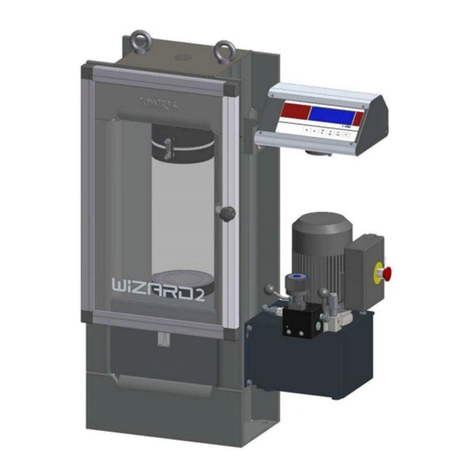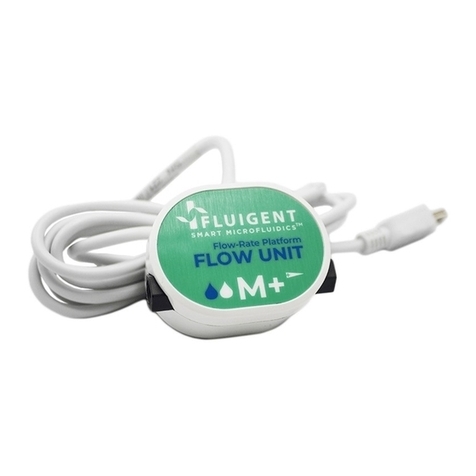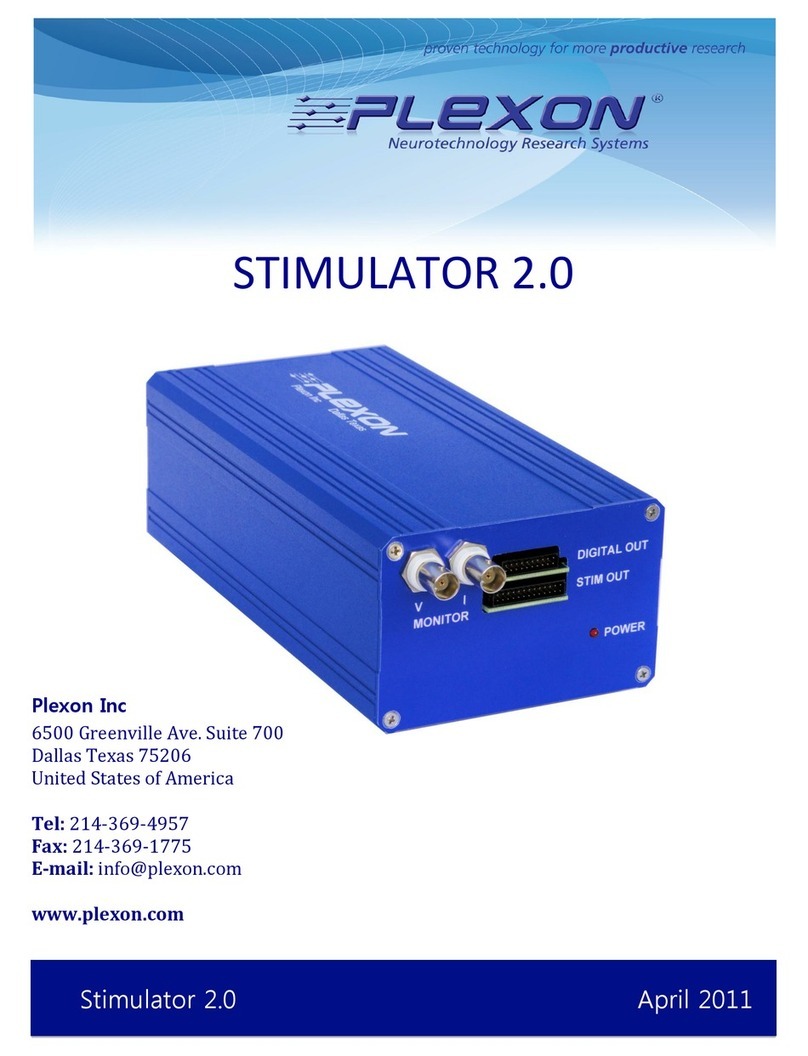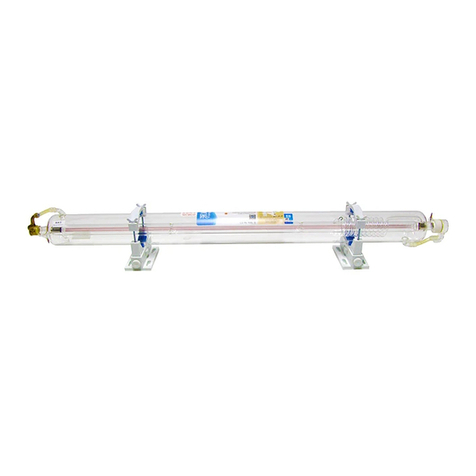Advance acoustic Mupid-2plus User manual

DIC C-268 DIC 162

Introduction
The Mupid series are mainly used in agarose electrophoresis. The greatest feature
is their compactness by the one apparatus power supply. The Mupid-2 has an
outstanding track record over some 20 years and has been incorporated into the
standard protocol of numerous testing manuals in Japan.
This model, the Mupid-2plus, retains all the performance of the Mupid-2 with
improved usability based on the ideas of the researchers using it. The Mupid-2plus
can be used under exactly the same test conditions as instructed in previous
testing manuals for the Mupid-2.
Please read this user manual carefully. Further information can be seen at the
Mupid website (http://www.mupid.com/English/)
Submarine-type electrophoresis system
User Manual
1P16P
MEMO

2
Before Use
•Symbols used in this manual and product •
Indicates a general precaution or warning. Ignoring this
instruction could cause a serious accident.
Indicates danger of an electric shock.
Follow these instructions completely.
Indicates the possibility of personal injury.
Follow these instructions completely.
Indicates the need to unplug the electrical cord. Ignoring this
instruction may cause an electric shock.
Indicates a testing precaution. If this instruction is ignored,
the product could fail and test results could be affected.
15P2P
Before using this product, be sure you fully understand its features as described in this
user manual and use it properly.

3P14P
3
Safety Precautions
Confirmation of Migration Conditions
- For product safety, if electrical current runs at 0.8 A or more the fuse will blow and
operation will stop. In such a case, contact a distributor for repair.
- Even if the fuse does not blow, accurate results are difficult to obtain if the temperature
exceeds 40 ˚C during migration, and the following changes should be considered in
such a case:
(1) Change the type of buffer.
(For example, change TAE buffer to TBE buffer for lower current usage)
(2) Reduce the concentration of buffer.
(3) Cool the buffer.
Do not use this product with wet hands.
Always use the special-purpose lid and power supply for the
migration tank. We are not responsible for any accidents or
damage caused by the use of other devices or equipment.
The power supply cannot be disconnected while the migration
tank lid is closed. Attempting to do so can cause damage.
Do not put fingers or objects into the migration tank while
electrical current is running.
Always make certain to turn off the power supply after the
electrophoretic run.
Always verify that the power supply is OFF and the migration tank
lid is opened before detaching the power supply.
When this product is not in use, or when you move it, detach the
power supply from the migration tank and remove the plug from
the outlet.
If this product is used in a manner not specified by the
manufacturer, the protection provided by the product may be
impaired.
14
Environmental conditions
Operating temperature:
Humidity:
Operating environment:
Altitude:
Transient overvoltage:
Protection class:
5-35 °C
20-80 % RH non-condensing
Indoor use only
Up to 2000 m (6500 ft)
Installation Category II
Pollution Degree 2
Mupid-2plus migration tank: 1
Mupid-2plus migration tank lid: 1
Mupid-2plus power supply: 1
Gel maker set-L: 1
- Gel maker stand-L: 1
- Gel tray-L: 2
- Gel tray-S: 4
- Comb-L: 2
Standard set contents

4
1 Mupid-2plus: Components and Functions
1-1 Electrophoresis System
Connect this part to the
migration tank first.
(1) (2)
Next rotate and close
the cover
Do not fill buffer above
this line.
It is delicate -- be careful
not to break it by
cleaning or polishing.
The buffer can be
smoothly drained from
this corner.
Set the gel here together
with the tray.
Platinum electrode
Drainage corner
Buffer indication line
Gel bed
Safety plug
The safety switch of the power
supply will not turn ON unless the lid
is set.
Output selection switch
Select Full or Half.
Output indicator LED
Indicates there is voltage
output in the output
terminal when lit.
Operation switch
Push to start
electrophoretic migration,
push again to stop the
migration.
Output terminal
This should be secured to
the connector of the
migration tank side.
Standard set contents
Mupid-2plus migration tank: 1
Mupid-2plus migration tank lid: 1
Mupid-2plus power supply: 1
Safety switch
This is turned ON by the lid.
Use this to open and
close the lid.
Handle
Migration tank lid
Power supply
Migration tank
13P4P
13
Migration tank
Outside dimensions:
Migration tank
internal dimensions:
Buffer capacity:
Material:
Weight:
Lid outside dimensions:
187.5 mm (W) × 139.5 mm (L) ×57.0 mm (H)
133.0 mm (W) ×120.6 mm (L) ×47.5 mm (H)
Approx. 250-280 mL
(maximum 300 mL when setting gel)
PPHOX
260 g
157.0 mm (W) ×139.5 mm (L) ×13.0 mm (H)
Power supply
Outside dimensions:
Input:
Output:
Fuse:
Weight:
43.0 mm (W) ×109.0 mm (L) ×52.0 mm (H)
(cord excluded)
100-120 VAC, 50 Hz/60 Hz, 25 VA
(A step-down transformer is required for use at
220-240 VAC, over 120 VAC)
(When there is the necessity of keeping the
temperature of buffer liquid low, it recommends
using it in 100 VAC.)
Half or all rectified waveform at input voltage
Half: 45 V (avg), 71 V (rms), Full: 90 V (avg),
100 V (rms) in case of 100 VAC
Half: 54 V (avg), 85 V (rms), Full: 108 V (avg),
120 V (rms) in case of 120 VAC
250 V, 0.8 A
155 g
Gel maker set L
Gel maker
stand dimensions:
Number of gels:
Gel tray dimensions:
Comb dimensions:
Well shape:
240.0 mm (W) ×126.0 mm (L) ×17.5 mm (H)
2 large gels, 4 mini gels
Large size: 109 mm (W) ×60 mm (L)
Mini size: 55 mm (W) ×60 mm (L)
10 mm (W) ×240 mm (L) ×42 mm (H)
Large gel: 6 mm (W) ×1 mm (L) ×12 wells
4 mm (W) ×1 mm (L) ×17 wells
Mini gel: 6 mm (W) ×1 mm (L) ×6 wells
4 mm (W) ×1 mm (L) ×8 wells
7 Product Specifications

12
6 Troubleshooting
Problem Causes and Measures
- Make sure that the electric cord is plugged into the outlet.
- Make sure that the operation button has been pressed.
- If the migration tank lid is not closed properly the safety switch
cannot go ON; make sure the lid is closed firmly.
- The fuse may have blown; contact a distributor or our service
center for repair.
- Make sure that the power supply is firmly connected to the
migration tank.
- Make sure that the type and concentration of buffer are
correct.
- Make sure that the gel is fully suffused with buffer.
- The electrode may be broken; contact a distributor for repair.
- Make sure that the voltage setting is correct.
- The type, concentration or temperature of the gel and buffer
can make a great difference.
- Make sure that buffer is not being re-used.
- Make sure there are no air bubbles in the gel.
- Agarose may not have sufficiently dissolved at the time of gel
preparation.
- Make sure that the migration tank was set up on a level
surface.
- Make sure that the gel was prepared evenly.
- Make sure that the wells have a good rectangular shape.
- Check if the concentration of stain is too low, or if it has been
re-used.
- Try extending the staining time.
- Make sure the amount of sample is sufficient.
- Make sure that the light source of the appropriate wave length
for the stain is used.
- If the gel is being observed in the migration tank or gel tray,
try observing the gel alone.
- Try testing again using a shorter migration time.
5P12P
"Gel maker set L" is standard for Mupid-2plus. The contents of the Gel maker set L
are as follows:
Gel maker stand-L: 1 Gel tray-S: 4
Comb-L: 2 Gel tray-L: 2
5
Standard set contents
[5 [
1-2 Gel Maker Set L
Set the comb in the gel maker stand to form wells in
the gel for application of the sample. Wells all have
a thickness of 1 mm and the width and number of
wells vary as follows:
Mini gel use:
4 mm (W) ×8 wells or 6 mm (W) ×6 wells
Large gel use:
4 mm (W) ×17 wells or 6 mm (W) ×12 wells
Set the gel tray in the gel maker stand, and pour the
gel-forming solution here. There are 2 sizes and each
of them has a migration indication line.
Gel tray-S: 52 mm (W) ×60 mm (L) [gel size]
Gel tray-L: 107 mm (W) ×60 mm (L) [gel size]
Set the gel tray and comb
here to prepare gel.
At maximum, 4 mini gels or
2 large gels can be prepared
at once.
Comb-L
Gel tray-S
Gel tray-L Gel Maker Stand-L
Several other Mupid-related options are available.
Please consult our website (http://www.mupid.com/English/).
The indicator LED
does not light
and samples
cannot be
migrated.
The indicator LED
is lit but samples
cannot be
migrated.
Migration is slow.
Bands are
distorted.
The bands cannot
be observed.

6
2 Gel Preparation
(1) Place the gel maker stand level and set the gel tray into
the stand. At maximum, four mini gels and two large
gels can be prepared at once.
If the gel tray is not placed level, the thickness
of the gel will not be uniform and migration
may be affected.
If preparation is conducted at 80 °C or higher,
there is a danger of deforming the gel maker
stand and gel tray.
(2) Weigh the required amounts of agarose powder and
buffer solution in a conical flask or other vessels, and
completely dissolve the agarose by applying heat.
(3) Let the agarose solution stand until it cools to 70 °C or
below.
(4) Set the comb into the gel maker stand. Choose the
small-toothed side (4 mm ×8 or 17 wells) or the large-
toothed side (6 mm ×6 or 12 wells) depending on the
purpose. Multiple combs can also be set for a single gel.
(5) Pour the appropriate amount of agarose solution into the
gel tray. To prepare a gel of about 4 mm thickness,
approximately 13 mL of agarose solution is required for
a mini gel and 26 mL for a large gel.
The order of steps (4) and (5) can be
reversed. For high-viscosity gels in which
air bubbles may be apt to remain,
performing step (5) first is recommended.
11P6P
11
5 Product Maintenance
Do not let buffer stand in the migration tank for a long time or re-use it. This can
not only prevent accurate test results, but can also cause damage.
Detach the power supply when discarding
buffer or cleaning the migration tank.
When detaching the power supply, push the top
with the thumb as illustrated in the figure at
right. Don't pull on the electric cord.
If buffer is spilled on the power supply, dry it thoroughly and have it checked at a
distributor as a precautionary measure.
Although the migration tank does not have any electrical switch, do not clean it by
immersion in water.
Polishing or cleaning the electrode with a brush can cause breakage and should
be avoided.
After cleaning, allow it to dry it in a place out of direct sunlight. Do not dry it under
severe conditions such as a dry oven, or a hair dryer.
Do not clean this product with organic solvents such as acetone. Deformation
could result.
Do not attempt to modify this product.
This product is designed to run on input of 100-120 V of alternating current; if
using it in a country where voltage is higher, be sure to use a step-down
transformer. When there is the necessity of keeping the temperature of buffer liquid
low, It recommends using it in 100 VAC.

10
4 Gel Staining and Band Confirmation
(1)
(1) Verify that the operation switch is OFF, the output
indicator LED is unlit and that the platinum electrode is
not forming bubbles.
(2) Remove the migration tank lid. It can be removed by
grasping the handle on the front of the lid and rotating
it open.
(3) After preparing the dye in a sealable container,
remove the gel tray from the migration tank. Submerge
the gel in the stain solution, either together with the
gel tray or after removing it from the gel tray.
(4) After allowing it to stand for the required amount of time, remove or
de-stain the gel and place it on the transilluminator for observation.
7P10P
7
(6) Before the solution gels, remove air bubbles from
the bottom surface of the gel tray using a glass rod
or other tools. Because bubbles on or in the gel will
affect migration, they should be drawn out with a
dropper, etc.
(7) Let it stand at room temperature for 15-20 minutes to allow
the solution to gel. Gelation may require more time if the
agarose concentration is low.
(8) When the solution has sufficiently gelled, hold the comb at
each end and gently lift it upward. Confirm the rectangular
shape of the wells and the absence of air bubbles.
(9) Grasp the both sides of the gel tray with hands and lift it up and out. Because
the gel is placed in the migration tank together with the gel tray, preparation
is complete at this point.
(2)
If the gel will not be used immediately, pour a small amount of
buffer solution over the gel and wrap it to prevent drying or
contamination.
Because of the danger of
overturning the migration tank,
do not lift the lid directly over it.
Because stains act directly on biological
molecules such as DNA, they are
potentially harmful to the human body.
Handle them carefully, wearing gloves
and avoiding direct contact with the skin.
When using ultraviolet light, be sure to protect eyes and skin
by wearing UV-protective goods such as a faceshield.
Stained gels and buffer solutions, etc. should be disposed of
as directed in the instructions for the stain. Clean off all
stains that adhere to the migration tank, gel tray or other
components.

98
3 Electrophoresis
Indication line
(1) Place the prepared gel on the gel bed of the migration
tank together with the tray. Since the side near the
power supply is cathode, wells should be placed on
the right for migration of nucleic acids in most cases.
Wipe off any excess gel that is adhering around and
bottom surface of the gel tray.
(2) Pour buffer solution to a level of about 3 mm above
the surface of the gel. However, do not fill above the
level of the buffer indication line. 250-300 mL of
buffer is required.
(3) Connect the power supply to the migration tank and
inset the electric plug into an outlet. The electric
current cannot be turned on with the lid open.
(4) Apply the sample to the wells using a pipette. The
amount of applicable sample depends on the
thickness of the gel; for example, a 4 mm well will
take about 5-8 µl and a 6mm well about 8-12 µl.
Note that the wells do not correspond to the pitch of
a multipipette.
(1) (2)
(5) After verifying that the operation switch of the power
supply is OFF, close the migration tank lid.
Do this as follows:
1) First insert the 2 tabs on the cover into the holes in
the migration tank.
2) Then rotate the cover forward to close it.
(6) Set the desired voltage using the output selection
switch.
(7) Push the operation switch to start migration. At this
time verify that the output indicator LED is lit and that
bubbles are forming on the platinum electrodes.
(8) Migration distance may be estimated using the line
printed on the gel tray or the slits on the migration tank
lid. Be sure to turn the operation switch OFF when
sufficient migration has been attained.
(9) Then proceed quickly to the operation of staining the gel.
9P8P
ON OFF
LED
Migration may be affected if the migration tank
is not placed on a level surface.
When changing the output, make
certain that the operation switch is OFF.
In this case the output indicator LED
will be unlit.
Take care not to put any foreign objects
into or touch inside of the migration
tank during migration.

98
3 Electrophoresis
Indication line
(1) Place the prepared gel on the gel bed of the migration
tank together with the tray. Since the side near the
power supply is cathode, wells should be placed on
the right for migration of nucleic acids in most cases.
Wipe off any excess gel that is adhering around and
bottom surface of the gel tray.
(2) Pour buffer solution to a level of about 3 mm above
the surface of the gel. However, do not fill above the
level of the buffer indication line. 250-300 mL of
buffer is required.
(3) Connect the power supply to the migration tank and
inset the electric plug into an outlet. The electric
current cannot be turned on with the lid open.
(4) Apply the sample to the wells using a pipette. The
amount of applicable sample depends on the
thickness of the gel; for example, a 4 mm well will
take about 5-8 µl and a 6mm well about 8-12 µl.
Note that the wells do not correspond to the pitch of
a multipipette.
(1) (2)
(5) After verifying that the operation switch of the power
supply is OFF, close the migration tank lid.
Do this as follows:
1) First insert the 2 tabs on the cover into the holes in
the migration tank.
2) Then rotate the cover forward to close it.
(6) Set the desired voltage using the output selection
switch.
(7) Push the operation switch to start migration. At this
time verify that the output indicator LED is lit and that
bubbles are forming on the platinum electrodes.
(8) Migration distance may be estimated using the line
printed on the gel tray or the slits on the migration tank
lid. Be sure to turn the operation switch OFF when
sufficient migration has been attained.
(9) Then proceed quickly to the operation of staining the gel.
9P8P
ON OFF
LED
Migration may be affected if the migration tank
is not placed on a level surface.
When changing the output, make
certain that the operation switch is OFF.
In this case the output indicator LED
will be unlit.
Take care not to put any foreign objects
into or touch inside of the migration
tank during migration.

10
4 Gel Staining and Band Confirmation
(1)
(1) Verify that the operation switch is OFF, the output
indicator LED is unlit and that the platinum electrode is
not forming bubbles.
(2) Remove the migration tank lid. It can be removed by
grasping the handle on the front of the lid and rotating
it open.
(3) After preparing the dye in a sealable container,
remove the gel tray from the migration tank. Submerge
the gel in the stain solution, either together with the
gel tray or after removing it from the gel tray.
(4) After allowing it to stand for the required amount of time, remove or
de-stain the gel and place it on the transilluminator for observation.
7P10P
7
(6) Before the solution gels, remove air bubbles from
the bottom surface of the gel tray using a glass rod
or other tools. Because bubbles on or in the gel will
affect migration, they should be drawn out with a
dropper, etc.
(7) Let it stand at room temperature for 15-20 minutes to allow
the solution to gel. Gelation may require more time if the
agarose concentration is low.
(8) When the solution has sufficiently gelled, hold the comb at
each end and gently lift it upward. Confirm the rectangular
shape of the wells and the absence of air bubbles.
(9) Grasp the both sides of the gel tray with hands and lift it up and out. Because
the gel is placed in the migration tank together with the gel tray, preparation
is complete at this point.
(2)
If the gel will not be used immediately, pour a small amount of
buffer solution over the gel and wrap it to prevent drying or
contamination.
Because of the danger of
overturning the migration tank,
do not lift the lid directly over it.
Because stains act directly on biological
molecules such as DNA, they are
potentially harmful to the human body.
Handle them carefully, wearing gloves
and avoiding direct contact with the skin.
When using ultraviolet light, be sure to protect eyes and skin
by wearing UV-protective goods such as a faceshield.
Stained gels and buffer solutions, etc. should be disposed of
as directed in the instructions for the stain. Clean off all
stains that adhere to the migration tank, gel tray or other
components.

6
2 Gel Preparation
(1) Place the gel maker stand level and set the gel tray into
the stand. At maximum, four mini gels and two large
gels can be prepared at once.
If the gel tray is not placed level, the thickness
of the gel will not be uniform and migration
may be affected.
If preparation is conducted at 80 °C or higher,
there is a danger of deforming the gel maker
stand and gel tray.
(2) Weigh the required amounts of agarose powder and
buffer solution in a conical flask or other vessels, and
completely dissolve the agarose by applying heat.
(3) Let the agarose solution stand until it cools to 70 °C or
below.
(4) Set the comb into the gel maker stand. Choose the
small-toothed side (4 mm ×8 or 17 wells) or the large-
toothed side (6 mm ×6 or 12 wells) depending on the
purpose. Multiple combs can also be set for a single gel.
(5) Pour the appropriate amount of agarose solution into the
gel tray. To prepare a gel of about 4 mm thickness,
approximately 13 mL of agarose solution is required for
a mini gel and 26 mL for a large gel.
The order of steps (4) and (5) can be
reversed. For high-viscosity gels in which
air bubbles may be apt to remain,
performing step (5) first is recommended.
11P6P
11
5 Product Maintenance
Do not let buffer stand in the migration tank for a long time or re-use it. This can
not only prevent accurate test results, but can also cause damage.
Detach the power supply when discarding
buffer or cleaning the migration tank.
When detaching the power supply, push the top
with the thumb as illustrated in the figure at
right. Don't pull on the electric cord.
If buffer is spilled on the power supply, dry it thoroughly and have it checked at a
distributor as a precautionary measure.
Although the migration tank does not have any electrical switch, do not clean it by
immersion in water.
Polishing or cleaning the electrode with a brush can cause breakage and should
be avoided.
After cleaning, allow it to dry it in a place out of direct sunlight. Do not dry it under
severe conditions such as a dry oven, or a hair dryer.
Do not clean this product with organic solvents such as acetone. Deformation
could result.
Do not attempt to modify this product.
This product is designed to run on input of 100-120 V of alternating current; if
using it in a country where voltage is higher, be sure to use a step-down
transformer. When there is the necessity of keeping the temperature of buffer liquid
low, It recommends using it in 100 VAC.

12
6 Troubleshooting
Problem Causes and Measures
- Make sure that the electric cord is plugged into the outlet.
- Make sure that the operation button has been pressed.
- If the migration tank lid is not closed properly the safety switch
cannot go ON; make sure the lid is closed firmly.
- The fuse may have blown; contact a distributor or our service
center for repair.
- Make sure that the power supply is firmly connected to the
migration tank.
- Make sure that the type and concentration of buffer are
correct.
- Make sure that the gel is fully suffused with buffer.
- The electrode may be broken; contact a distributor for repair.
- Make sure that the voltage setting is correct.
- The type, concentration or temperature of the gel and buffer
can make a great difference.
- Make sure that buffer is not being re-used.
- Make sure there are no air bubbles in the gel.
- Agarose may not have sufficiently dissolved at the time of gel
preparation.
- Make sure that the migration tank was set up on a level
surface.
- Make sure that the gel was prepared evenly.
- Make sure that the wells have a good rectangular shape.
- Check if the concentration of stain is too low, or if it has been
re-used.
- Try extending the staining time.
- Make sure the amount of sample is sufficient.
- Make sure that the light source of the appropriate wave length
for the stain is used.
- If the gel is being observed in the migration tank or gel tray,
try observing the gel alone.
- Try testing again using a shorter migration time.
5P12P
"Gel maker set L" is standard for Mupid-2plus. The contents of the Gel maker set L
are as follows:
Gel maker stand-L: 1 Gel tray-S: 4
Comb-L: 2 Gel tray-L: 2
5
Standard set contents
[5 [
1-2 Gel Maker Set L
Set the comb in the gel maker stand to form wells in
the gel for application of the sample. Wells all have
a thickness of 1 mm and the width and number of
wells vary as follows:
Mini gel use:
4 mm (W) ×8 wells or 6 mm (W) ×6 wells
Large gel use:
4 mm (W) ×17 wells or 6 mm (W) ×12 wells
Set the gel tray in the gel maker stand, and pour the
gel-forming solution here. There are 2 sizes and each
of them has a migration indication line.
Gel tray-S: 52 mm (W) ×60 mm (L) [gel size]
Gel tray-L: 107 mm (W) ×60 mm (L) [gel size]
Set the gel tray and comb
here to prepare gel.
At maximum, 4 mini gels or
2 large gels can be prepared
at once.
Comb-L
Gel tray-S
Gel tray-L Gel Maker Stand-L
Several other Mupid-related options are available.
Please consult our website (http://www.mupid.com/English/).
The indicator LED
does not light
and samples
cannot be
migrated.
The indicator LED
is lit but samples
cannot be
migrated.
Migration is slow.
Bands are
distorted.
The bands cannot
be observed.

4
1 Mupid-2plus: Components and Functions
1-1 Electrophoresis System
Connect this part to the
migration tank first.
(1) (2)
Next rotate and close
the cover
Do not fill buffer above
this line.
It is delicate -- be careful
not to break it by
cleaning or polishing.
The buffer can be
smoothly drained from
this corner.
Set the gel here together
with the tray.
Platinum electrode
Drainage corner
Buffer indication line
Gel bed
Safety plug
The safety switch of the power
supply will not turn ON unless the lid
is set.
Output selection switch
Select Full or Half.
Output indicator LED
Indicates there is voltage
output in the output
terminal when lit.
Operation switch
Push to start
electrophoretic migration,
push again to stop the
migration.
Output terminal
This should be secured to
the connector of the
migration tank side.
Standard set contents
Mupid-2plus migration tank: 1
Mupid-2plus migration tank lid: 1
Mupid-2plus power supply: 1
Safety switch
This is turned ON by the lid.
Use this to open and
close the lid.
Handle
Migration tank lid
Power supply
Migration tank
13P4P
13
Migration tank
Outside dimensions:
Migration tank
internal dimensions:
Buffer capacity:
Material:
Weight:
Lid outside dimensions:
187.5 mm (W) × 139.5 mm (L) ×57.0 mm (H)
133.0 mm (W) ×120.6 mm (L) ×47.5 mm (H)
Approx. 250-280 mL
(maximum 300 mL when setting gel)
PPHOX
260 g
157.0 mm (W) ×139.5 mm (L) ×13.0 mm (H)
Power supply
Outside dimensions:
Input:
Output:
Fuse:
Weight:
43.0 mm (W) ×109.0 mm (L) ×52.0 mm (H)
(cord excluded)
100-120 VAC, 50 Hz/60 Hz, 25 VA
(A step-down transformer is required for use at
220-240 VAC, over 120 VAC)
(When there is the necessity of keeping the
temperature of buffer liquid low, it recommends
using it in 100 VAC.)
Half or all rectified waveform at input voltage
Half: 45 V (avg), 71 V (rms), Full: 90 V (avg),
100 V (rms) in case of 100 VAC
Half: 54 V (avg), 85 V (rms), Full: 108 V (avg),
120 V (rms) in case of 120 VAC
250 V, 0.8 A
155 g
Gel maker set L
Gel maker
stand dimensions:
Number of gels:
Gel tray dimensions:
Comb dimensions:
Well shape:
240.0 mm (W) ×126.0 mm (L) ×17.5 mm (H)
2 large gels, 4 mini gels
Large size: 109 mm (W) ×60 mm (L)
Mini size: 55 mm (W) ×60 mm (L)
10 mm (W) ×240 mm (L) ×42 mm (H)
Large gel: 6 mm (W) ×1 mm (L) ×12 wells
4 mm (W) ×1 mm (L) ×17 wells
Mini gel: 6 mm (W) ×1 mm (L) ×6 wells
4 mm (W) ×1 mm (L) ×8 wells
7 Product Specifications

3P14P
3
Safety Precautions
Confirmation of Migration Conditions
- For product safety, if electrical current runs at 0.8 A or more the fuse will blow and
operation will stop. In such a case, contact a distributor for repair.
- Even if the fuse does not blow, accurate results are difficult to obtain if the temperature
exceeds 40 ˚C during migration, and the following changes should be considered in
such a case:
(1) Change the type of buffer.
(For example, change TAE buffer to TBE buffer for lower current usage)
(2) Reduce the concentration of buffer.
(3) Cool the buffer.
Do not use this product with wet hands.
Always use the special-purpose lid and power supply for the
migration tank. We are not responsible for any accidents or
damage caused by the use of other devices or equipment.
The power supply cannot be disconnected while the migration
tank lid is closed. Attempting to do so can cause damage.
Do not put fingers or objects into the migration tank while
electrical current is running.
Always make certain to turn off the power supply after the
electrophoretic run.
Always verify that the power supply is OFF and the migration tank
lid is opened before detaching the power supply.
When this product is not in use, or when you move it, detach the
power supply from the migration tank and remove the plug from
the outlet.
If this product is used in a manner not specified by the
manufacturer, the protection provided by the product may be
impaired.
14
Environmental conditions
Operating temperature:
Humidity:
Operating environment:
Altitude:
Transient overvoltage:
Protection class:
5-35 °C
20-80 % RH non-condensing
Indoor use only
Up to 2000 m (6500 ft)
Installation Category II
Pollution Degree 2
Mupid-2plus migration tank: 1
Mupid-2plus migration tank lid: 1
Mupid-2plus power supply: 1
Gel maker set-L: 1
- Gel maker stand-L: 1
- Gel tray-L: 2
- Gel tray-S: 4
- Comb-L: 2
Standard set contents
Table of contents
Popular Laboratory Equipment manuals by other brands
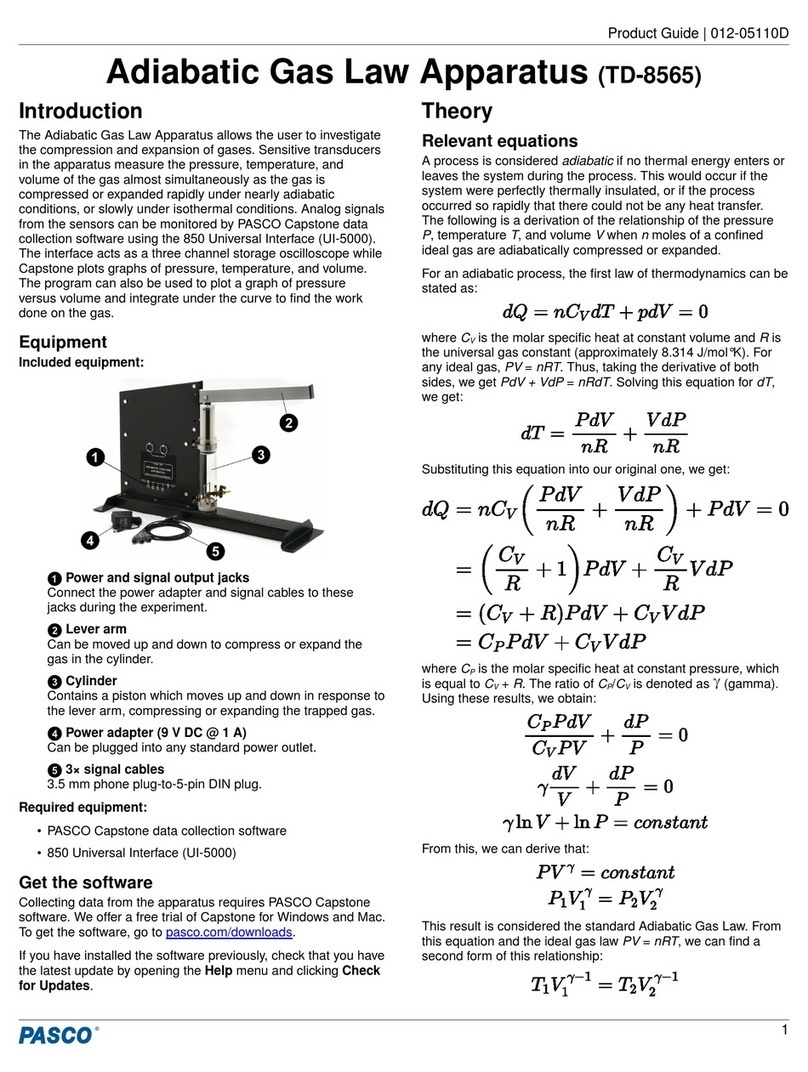
PASCO
PASCO TD-8565 Product guide

Thermo Scientific
Thermo Scientific LTQ Series Hardware manual

Tianlong
Tianlong Real-time PCR System user manual
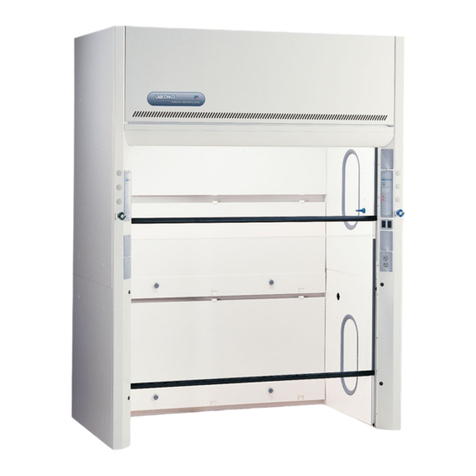
Labconco
Labconco Protector XL 1124 Series user manual

Fritsch
Fritsch PULVERISETTE 7 premium line operating instructions

NuAire
NuAire LabGard NU-640-400 Operation and maintenance manual

Heidolph
Heidolph EKT 3001 instruction manual
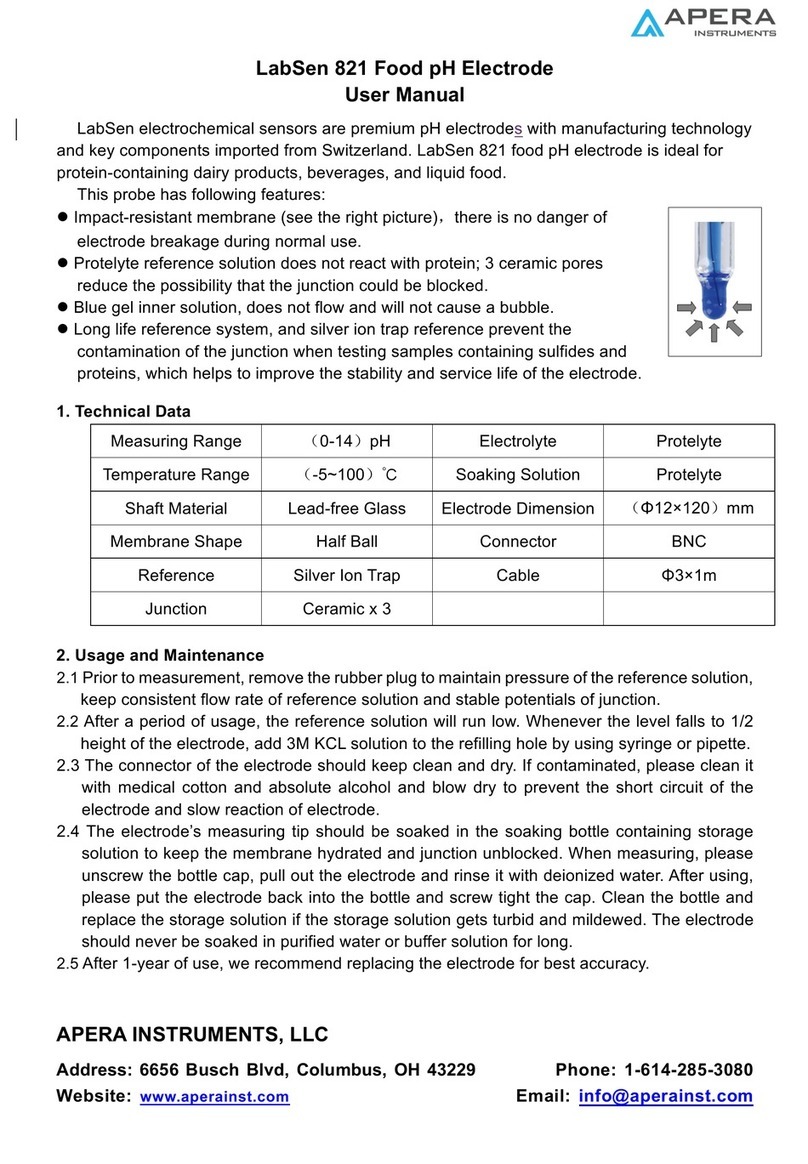
Apera Instruments
Apera Instruments LabSen 821 user manual

Fisher Scientific
Fisher Scientific Fisherbrand GT2 instruction manual
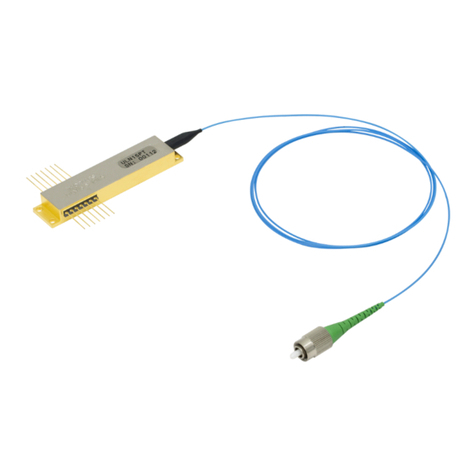
THORLABS
THORLABS ULN15 Series user guide
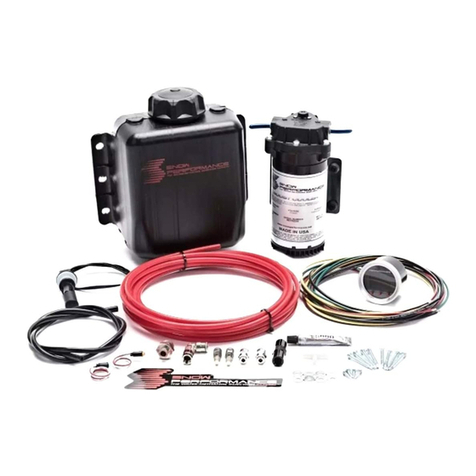
Snow Performance
Snow Performance Boost Cooler 210 instructions
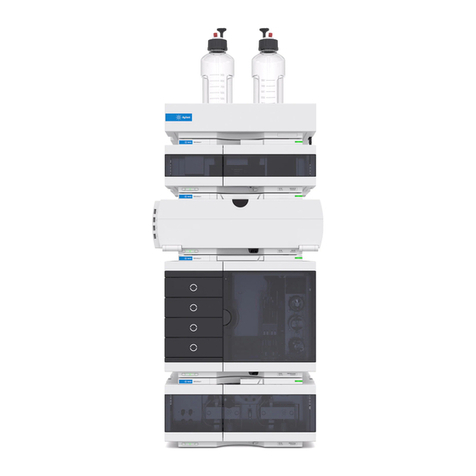
Agilent Technologies
Agilent Technologies 1260 Infinity quick start guide
